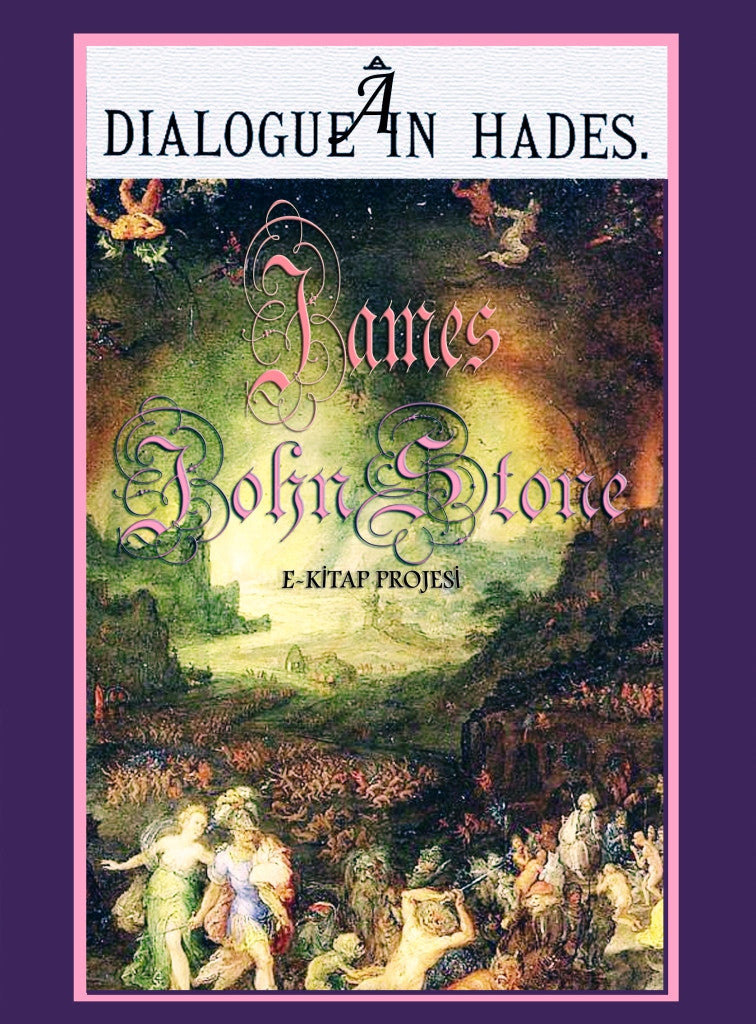A Dialogue in Hades
2.99 TL
When Jesus arrives, Hades bids his servants to bolt and lock the doors, but to no avail; Jesus shatters the gates and enters. He seizes Satan and binds him in iron chains, then consigning him into Hades’s keeping until the second coming. Jesus next turns his attention to the patriarchs. He raises up Adam, along with all the prophets and the saints.
Together, they all depart up out of Hades, and ascend into Paradise.) The “Harrowing of Hell” portion of that Gospel was widely circulated in other compilations of religious literature, most notably in the Golden Legend of the lives of the saints, compiled by Jacob of Voragine in the 13th century. On the other hand, The original of this manuscript is deposited in the French war archives, in Paris; a copy was, with the permission of the French Government, taken in 1855. This document is supposed to have been written about the year 1765. In the remainder of this book, we would like to look at ten different visual depictions of the story.
The original of this manuscript is deposited in the French war archives, in Paris; a copy was, with the permission of the French Government, taken in 1855, and deposited in the Library of the Legislative Assembly of Canada. The Literary and Historical Society of Quebec, through the kindness of Mr. Todd, the Librarian, was permitted to have communication thereof. This document is supposed to have been written about the year 1765, that is five years after the return to France from Canada of the writer, the Chevalier Johnstone, a Scottish Jacobite, who had fled to France after the defeat at Culloden, and obtained from the French monarch, with several other Scotchmen, commissions in the French armies. In 1748, says Francisque Michel,A “he sailed from Rochefort as an Ensign with troops going to Cape Breton; he continued to serve in America until he returned to France, in December, 1760, having acted during the campaign of 1759, in Canada, as aide-de-camp to Chevalier de Levis.
On Levis being ordered to Montreal, Johnstone was detached and retained by General Montcalm on his staff, on account of his thorough knowledge of the environs of Quebec, and particularly of Beauport, where the principal works of defence stood, and where the whole army, some 11,000 men, were entrenched, leaving in Quebec merely a garrison of 1500. The journal is written in English, and is not remarkable for orthography or purity of diction; either Johnstone had forgotten or had never thoroughly known the language. The style is prolix, sententious, abounding in quotations from old writers. This document had first attracted the attention of one of the late historians of Canada, the Abbé Ferland, who attached much importance to it, as calculated to supply matters of detail and incidents unrecorded elsewhere. Colonel Margry, in charge of the French records, had permitted the venerable writer, then on a visit to Paris, to make extracts from it; some of which extracts, the abbé published at the time of the laying of the St. Foy Monument, in 1862. The Chevalier Johnstone differs in toto from the opinions expressed by several French officers of regulars, respecting the conduct of the Canadian Militia, in 1759, ascribing to their valour, on the 13th September, the salvation of a large portion of the French army. He has chosen the singular, though not unprecedented mode of the Dialogue, to recapitulate the events of a campaign in which he played a not inconsiderable part.”
—J. M. LeMoine.












Bu ürünü Arkadaşlarınla Paylaş: